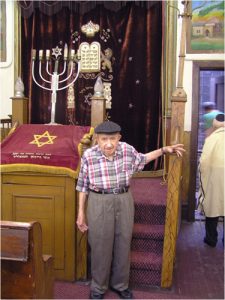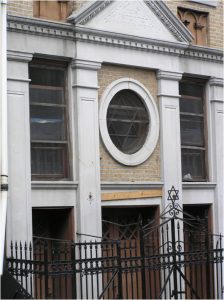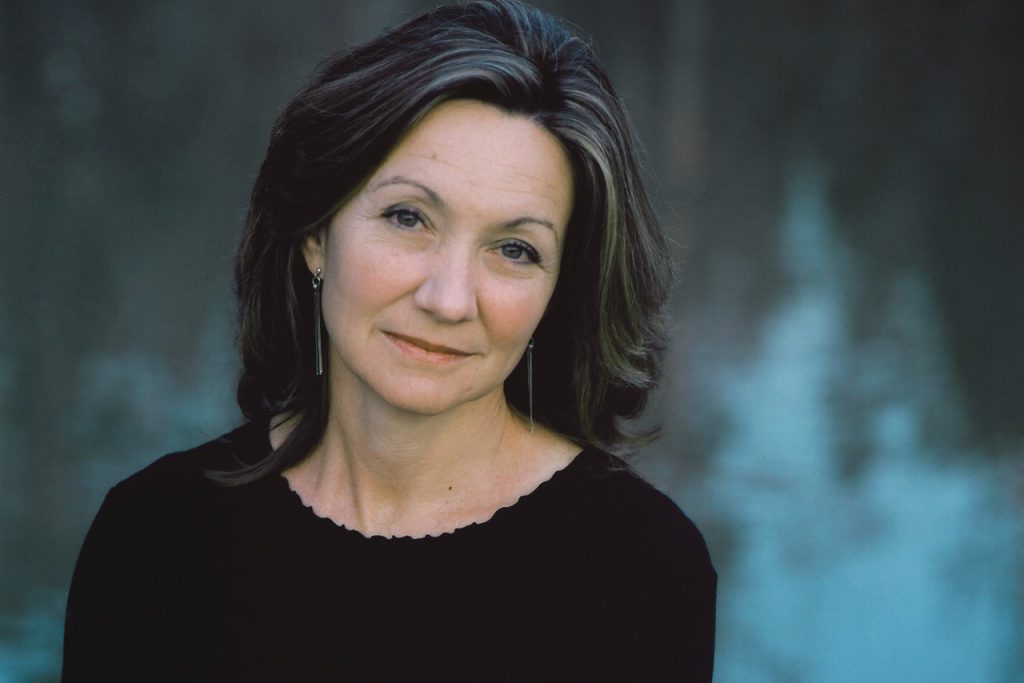
When Jonathan Boyarin started attending Stanton Street Shul, a small Manhattan synagogue, he and his wife were two of the youngest members—a pair of thirty-year-olds in a sometimes cantankerous congregation of older men. Over its hundred-year history, the narrow building at 180 Stanton Street has been a home base for several generations of Jewish immigrants and children of immigrants. Many of these families eventually moved further up into Manhattan, but some stayed, speaking Yiddish, practicing traditional religion, and giving the synagogue its working-class character.
Boyarin, an anthropologist specializing in Jewish studies, visited Stanton Street for the first time back in 1983 when he was looking for a synagogue (or “shul,” as Orthodox Jews will often say) where he could attend prayers every morning. He and his wife, a New York City native, spend their summer and winter breaks on the Lower East Side. Boyarin didn’t come to the synagogue to write a book, but Stanton Street Shul was a tempting anthropological subject. Here was a piece of Old World Judaism, except that it wasn’t really old—it was new, too, and changing as rapidly as the Lower East Side was gentrifying.
Every time Boyarin would try to pin the synagogue down with words, something new would come up. Stanton Street’s longtime rabbi had a falling out with the congregation and left. A younger generation began turning up at services. Boyarin and his wife, Elissa Sampson, are in their fifties now, and that’s older than most people at Stanton Street. There are many young couples, straight as well as gay, which is one feature that makes the shul unusual among Modern Orthodox. But the young people are often at Stanton Street for only a few years before they move on to more family-friendly neighborhoods. (On the Lower East Side, Orthodox Jews can’t push a stroller on from Friday evening to Saturday evening without violating the Sabbath commandment to rest. Other Manhattan neighborhoods have special zones, established by rabbis, where stroller use and some other types of work are permitted.)

By the summer of 2008, Boyarin had figured out that he’d never be able, in his words, to make Stanton Street “sit still for its ethnographic portrait.” He figured, “I’ll be in shul every morning—let me just take notes every day and see what happens.” Those daily writings became a book, Mornings at the Stanton Street Shul. The book doesn’t have a plot and doesn’t pretend to—it’s a journal of twelve weeks in the life of the shul. Morning Torah portions. Candidates for the job of rabbi. Holidays celebrated with kugel and rainbow cookies.
Prayers that summer were supposed to be held every morning at 6:45, but Jewish law requires a quorum of ten men for public prayer, and oftentimes ten wouldn’t show up until much later. Sometimes the rabbi would have someone go out to the street and grab the next Jew who came along. Other times he’d open the holy ark at the front of the sanctuary and just count the Torah scroll as the tenth man.
That’s the Stanton Street Shul—both traditional and laid back. It’s on the liberal edge of Modern Orthodoxy—the branch of Judaism that combines fairly strict adherence to Jewish law with some adaptations to the modern world. Services are in Hebrew at Stanton Street. Women don’t count toward the quorum of ten for prayer. At the same time, most members of the synagogue’s leadership board are women, Boyarin says. Women read aloud from the Torah a few times a year at special services, which wouldn’t happen at many other Orthodox synagogues, even in Modern Orthodoxy.
One visitor called Stanton Street the place “where hip meets hip replacement.” It’s true, Boyarin says: when you go to services, alongside the older folks you’ll see young guys in hipster hats and checkered shirts. Newcomers are attracted, as Boyarin and his wife were, by Stanton Street’s reputation for unpretentious, no-need-to-dress-up Orthodox Judaism. “Some people might have grown up in Modern Orthodox congregations and wanted to keep doing that, but not in as straight-laced a way,” Boyarin explains. “After all, that’s not what they moved to New York City for.”
Boyarin told the shul’s board that he was working on a book, but he didn’t discuss it explicitly with everyone else. “They know I’m an anthropologist,” he says, “and they saw me making notes.” One elderly member, after reading the book, told him it was like sitting in the living room together, listening to Boyarin tell all the shul’s stories. Another friend just said: “You wrote a whole book without saying anything nasty about anyone!”
Throughout the book, the synagogue seems on the edge of trouble—not enough money, not enough members on the books. And it’s got a skeleton in the closet, in the form of a previous rabbi who tried to sell the building out from under his congregation. Boyarin’s son, Jonah, calls Stanton Street “the little shul that couldn’t, sometimes.” Yet the family still loves the synagogue and hopes newcomers keep coming in.
“It’s not a place that always works, and it’s never a place that works perfectly,” Boyarin says. “But when it does work, it’s very, very special.”
Jonathan Boyarin is the Leonard and Tobee Kaplan Distinguished Professor of Modern Jewish Thought in the Department of Religious Studies and the Carolina Center for Jewish Studies, both in the College of Arts and Sciences.


